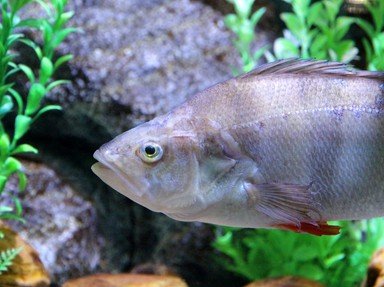Quiz Answer Key and Fun Facts
1. Commonly found in lakes and large rivers throughout Europe and Asia, our first freshwater fish is considered one of the destructive invasive species. Related to the common goldfish, which fish is this?
2. Amongst the largest of freshwater game fish, anglers find catching this species a challenge because of their aggressive hits and aerial acrobatics. In Britain, they are often returned alive to the water to safeguard future sporting stocks.
3. This species regularly migrates long distances, from lakes into rivers and streams, to spawn. For many centuries a popular target for anglers, the introduction of the species into Alaska and Yellowstone National Park has been a popular move with sports fishermen there. Which fish it this?
4. This species lives in the streams, lakes, ponds and rivers of the UK and the Atlantic coast of North America. It prefers areas with thick, submerged vegetation as it is not well equipped for defense. Which fish is this?
5. Common to the rivers and streams of northern Europe, particularly France and Germany, it is often used as a bait fish in Ireland. Active and gregarious, it prefers clear, deep, free-flowing streams. Which fish is this?
6. Our previous species have all been minnows compared to this monster, the largest freshwater fish found in North America. Usually lurking at the bottom of slow-moving rivers, bays and estuaries, its diet varies depending on what is available. What is this giant fish?
7. Also sometimes called 'gambezi', this small fish is native to shallow streams and rivers from southern Illinois to northern Mexico. They have been introduced around the world, and in Australia are considered a pest. Which fish is this?
8. Popular with anglers, this is the state fish of Alabama, the state freshwater fish of Georgia, Florida and Mississippi, and the official sport fish of Tennessee. They are noted for their fight and often leap out of the water in an attempt to rid themselves of a hook. Which fish is this?
9. This anadromous species lives much of its life in the sea but returns to rivers and lakes to spawn. Native to North America from California to Alaska and from Japan to Siberia in Asia, these are highly-prized catches for the sports angler. Which fish is this?
10. Native to North America, this species is found from Alaska, across the Great Lakes, and down into the Mississippi river basin. They eat a diet of invertebrates, fish eggs, crayfish, shrimp and juvenile fish. Which species of fish is this?
Source: Author
EnglishJedi
This quiz was reviewed by FunTrivia editor
Tizzabelle before going online.
Any errors found in FunTrivia content are routinely corrected through our feedback system.

